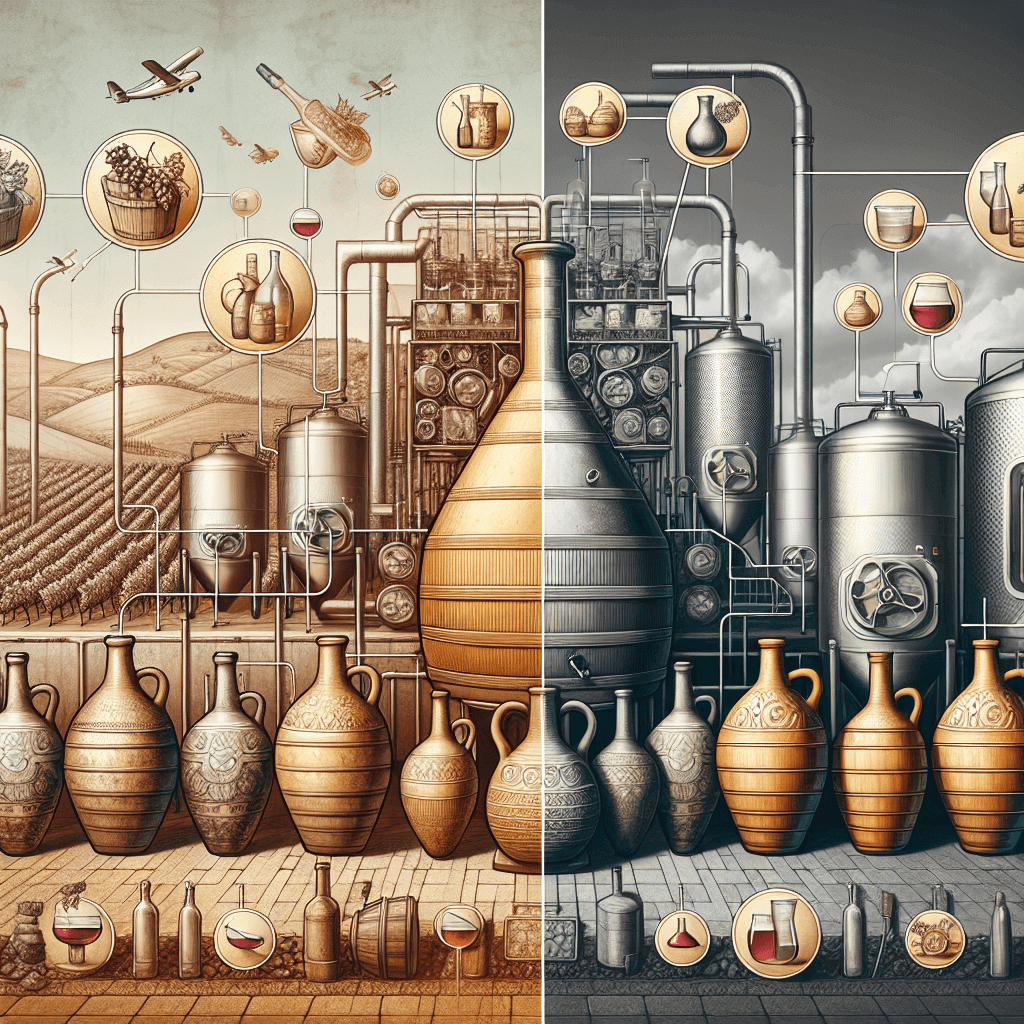Winemakers are constantly experimenting with new fermentation methods to create unique and distinctive wines. These innovative techniques not only enhance the flavour and quality of the wine but also contribute to the diversity and richness of the wine industry. In this article, we will explore some of the most innovative fermentation methods being used in winemaking today and their impact on the final product.
Amphorae: Using clay amphorae for fermentation is a technique that dates back thousands of years. This ancient method is experiencing a resurgence as winemakers seek to create wines with unique flavours and textures.
- Historical Technique: Amphorae were used by ancient civilisations for winemaking, and their use is being revived by modern winemakers.
- Unique Flavours: The porous nature of clay allows for micro-oxygenation, which can enhance the wine's complexity and flavour.
- Natural Fermentation: Amphorae provide a natural environment for fermentation, allowing the true character of the grapes to shine through.
Concrete Eggs: Concrete eggs are a modern innovation in winemaking, providing a neutral environment for fermentation that allows the wine's true character to develop.
- Neutral Fermentation: Concrete eggs do not impart any flavours to the wine, allowing the natural flavours of the grapes to dominate.
- Micro-Oxygenation: The porous nature of concrete allows for micro-oxygenation, which can enhance the wine's texture and complexity.
- Thermal Stability: Concrete eggs provide excellent thermal stability, helping to maintain consistent fermentation temperatures.
Wild Fermentation: Wild fermentation involves allowing natural yeast present on the grapes and in the winery environment to ferment the wine, rather than using cultured yeast strains. This method can produce complex and interesting flavours.
- Natural Process: Wild fermentation relies on the natural yeast found on the grape skins and in the winery, resulting in a more natural fermentation process.
- Complex Flavours: Wines produced using wild fermentation often have complex and unique flavours, reflecting the terroir and environment.
- Unpredictable Outcomes: While wild fermentation can produce exceptional wines, it also carries a degree of unpredictability, as the natural yeast can vary from year to year.
Carbonic Maceration: Carbonic maceration is a fermentation technique often used for Beaujolais wines, where whole grapes are fermented in a carbon dioxide-rich environment. This method produces fruity and vibrant wines.
- Whole Grape Fermentation: In carbonic maceration, whole grapes are placed in a sealed tank filled with carbon dioxide, causing fermentation to begin inside the grape.
- Fruity Flavours: This technique produces wines with bright, fruity flavours and low tannins, making them very approachable.
- Quick Turnaround: Wines made using carbonic maceration are often ready to drink soon after fermentation, making them popular for early release.
Hybrid Methods: Combining traditional and modern techniques can lead to innovative and exciting wines. Winemakers are experimenting with hybrid methods to create unique flavour profiles and enhance the quality of their wines.
- Blending Techniques: Hybrid methods involve blending different fermentation techniques to create a balanced and complex wine.
- Innovative Approaches: Winemakers are using a combination of traditional and modern methods, such as fermenting in both amphorae and stainless steel tanks.
- Enhanced Quality: The use of hybrid methods can enhance the quality and complexity of the wine, offering a unique and memorable tasting experience.
Conclusion: Innovative fermentation methods are transforming the winemaking industry, offering new and exciting ways to produce high-quality wines. From ancient techniques like amphorae to modern innovations like concrete eggs, these methods are enhancing the flavour, complexity, and uniqueness of the wines. Whether you are a wine enthusiast or a casual drinker, exploring wines made using these innovative fermentation methods can provide a rich and rewarding experience.

